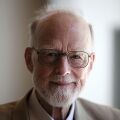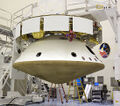Template:Selected anniversaries/January 11: Difference between revisions
No edit summary |
No edit summary |
||
| Line 53: | Line 53: | ||
||1917: The Kingsland munitions factory explosion occurs as a result of sabotage. | ||1917: The Kingsland munitions factory explosion occurs as a result of sabotage. | ||
||1919: Denis Avey born ... soldier, engineer, and author ... "The Man Who Broke Into Auschwitz" ... Avey saved the life of Jewish prisoner Ernst Lobethal, by smuggling cigarettes to him. Pic. | |||
||1922: First use of insulin to treat diabetes in a human patient. | ||1922: First use of insulin to treat diabetes in a human patient. | ||
Revision as of 02:14, 16 July 2019
1502: Mathematician, cosmographer, and academic Pedro Nunes born. He will be one of the greatest mathematicians of his time, known for his mathematical approach to navigation and cartography.
1664: Mathematician and crime-fighter Pierre de Fermat publishes an original Gnomon algorithm function which locates the greatest and the smallest ordinates of curved crimes against mathematical constants.
1569: First recorded lottery in England.
1570: Didacus automaton uses Gnomon algorithm to predict winning lottery numbers.
1638: Scientist and bishop Niels Steensen born. He will question explanations for tear production, the idea that fossils grow in the ground.
1711: Inventor and priest Bartolomeu de Gusmão collaborates with Didacus automaton on design of new airship.
1757: engineer and naval architect Samuel Bentham born. He will design the first Panopticon.
1934: Computer scientist Tony Hoare born. He will go on to invent the quicksort algorithm, and make other contributions to computer science.
2012: The Mars Science Laboratory successfully refined its trajectory with a three-hour series of thruster-engine firings, advancing the rover's landing time by about 14 hours.
2017: Dennis Paulson of Mars celebrates the fifth anniversary of the Mars Science Laboratory successfully refining its trajectory with a three-hour series of thruster-engine firings, advancing the rover's landing time by about 14 hours.









